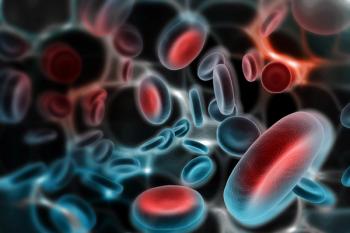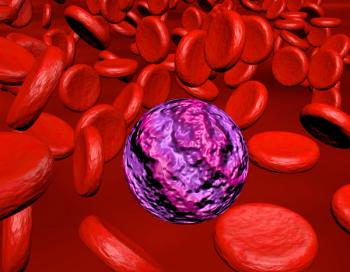
- Oncology Vol 28 No 4_Suppl_1
- Volume 28
- Issue 4_Suppl_1
(S011) Comparison of Toxicities and Outcomes for Conventional and Hypofractionated Radiation Therapy for Early Glottic Carcinoma
Our experience leads us to suspect that hypofractionation, as used in the US, increases toxicity without improving efficacy.
M.T. Scott, MD, MBA, A.R. Dosch, BS, D. Kwon, PhD, W. Zhao, MD, MS, M.A. Samuels, MD; University of Miami Sylvester Comprehensive Cancer Center and Jackson Memorial Hospital
Purpose: The traditional approach to treatment of stage I vocal cord cancer has been to deliver 66–70 Gy in two Gy daily fractions. A Japanese randomized trial (2006) compared hypofractionated radiotherapy (RT) at 2.25 Gy daily with 56.25 Gy for “minimal” T1 and between 63 Gy for larger T1 tumors with 60–66 Gy in 2-Gy fractions. Local control was superior with hypofractionation, and toxicity was reported as extremely low in both arms, leading to widespread adoption of the hypofractionated regimen. However, many US institutions have modified this regimen to deliver a higher total dose (63 Gy for all T1, 65.25 Gy for T2), potentially resulting in more severe acute toxicity. The dose range for comparable conventionally fractionated patients is higher than in Japan, possibly improving local control. Our experience leads us to suspect that hypofractionation, as used in the US, increases toxicity without improving efficacy.
Materials and Methods: From 2003–2013, 100 patients with histologically proven early-stage (T1–T2) squamous cell carcinoma of the larynx were treated with RT at our institution and analyzed retrospectively. Median age was 64 years (range: 31–94 yr). Seventy-six patients had T1 tumors, and 24 patients had T2 tumors. Forty-eight patients in the conventional RT group received 2 Gy daily; 52 patients in the hypofractionated group received 2.25 Gy daily. The median RT dose was 66 Gy (range: 54–70 Gy) for conventional RT and 63 Gy (range: 58.5–67.5 Gy) for hypofractionated RT. Fisher’s exact test was used for comparing toxicities between the two groups, and two-sided P values were reported. Recurrence-free survival (RFS) was estimated using the Kaplan-Meier method, and log-rank test was used to compare RFS curves.
Results: The median follow-up was 28.8 months overall, with 54.7 months (range: 7.1–117.4 mo) for conventional RT and 16.1 months (range: 5–64.7 mo) for hypofractionated RT, after excluding nine patients whose follow-up was less than 3 months from local control analysis. Conventional RT patients had less grade 2 dysphagia [52.1% vs 75%; P = .022], grade 2/3 hoarseness [16.7% vs 50%; P < .001], and grade 2/3 laryngeal mucositis [27.1% vs 63.5%; P < .001] and required less administration of narcotics [43.8% vs 75%; P = .002] acutely during treatment. The rates of acute grade 2/3 radiation dermatitis [52.1% vs 63.5%; P = .312], grade 2/3 laryngeal edema [25% vs 32.7%; P = .266], and weight loss (1.3% vs 2%; P = .655) were similar in both groups. Complete response to treatment was 91.7% in the conventional RT group and 90.4% in the hypofractionated group. RFS was comparable at 24 months [86.7% vs 86.6%; P = .988] and at 60 months [82.8% vs 78.8%; P = .643] in patients receiving conventional and hypofractionated RT, respectively. The P value of the log-rank test for RFS was .797.
Conclusions: Our retrospective data suggest that patients receiving hypofractionated RT may experience higher rates of grade 2 dysphagia, grade 2/3 hoarseness, and grade 2/3 laryngeal mucositis and require increased narcotic use, without improvements in complete response to treatment or RFS.
Proceedings of the 96th Annual Meeting of the American Radium Society -
Articles in this issue
Newsletter
Stay up to date on recent advances in the multidisciplinary approach to cancer.


















































































